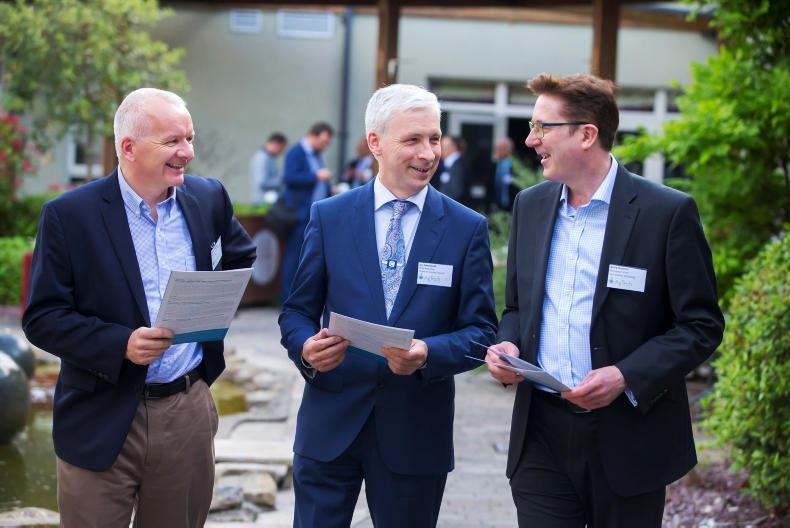Ireland has the potential to be at the forefront of an agricultural technology sector that will not just allow farmers to be more profitable, but create a new export industry around agriculture. The key is working together.
That was the message at the AgTech Symposium held by the Local Enterprise Offices of the southeast region. The aim of the symposium is to grow, progress and increase profitability through the use of AgTech.
Data and decisions
Teagasc’s head of research, Frank O’Mara, said we have the potential to become world leaders, not just in grass-based dairying, but in how data is used to drive decisions.
Patrick Barrett of the Department of Agriculture said technology can be used to increase the sustainability of Irish agriculture.
Prof Willie Donnelly said the key is working together to leverage existing technology with the expertise already available in the industry.
The morning conference saw top industry leaders in agriculture, technology and drivers of AgTech innovation, along with entrepreneurs from successful start-ups, the investor community and farmers who are embracing AgTech on their farms, all engage in insightful panel discussions.
Bioeconomy, automation and GM
The conference offered great insight into the future, where agriculture and technology collide in Ireland. Speakers said that by investigating opportunities in AgTech, we can grow and develop ready-built technologies to be used on farms. The real impact of AgTech emerged from the insights of progressive farmers and companies who are using technology on the farm every day.
The afternoon session consisted of three unique breakout workshops, focusing on bioeconomy, automation and smart farming, and sensors and GM engineering.
Speaking at the event, Barry Caslin from Teagasc said: “Industry has to become smarter through the use of technology to add value along our food supply chains. The farmers leading the way in adopting the new technologies will ultimately accelerate the movement that transforms the global agri food system into one which will efficiently feed nine billion people by 2050.”
Read more
The AgTech revolution has arrived
Ireland has the potential to be at the forefront of an agricultural technology sector that will not just allow farmers to be more profitable, but create a new export industry around agriculture. The key is working together.
That was the message at the AgTech Symposium held by the Local Enterprise Offices of the southeast region. The aim of the symposium is to grow, progress and increase profitability through the use of AgTech.
Data and decisions
Teagasc’s head of research, Frank O’Mara, said we have the potential to become world leaders, not just in grass-based dairying, but in how data is used to drive decisions.
Patrick Barrett of the Department of Agriculture said technology can be used to increase the sustainability of Irish agriculture.
Prof Willie Donnelly said the key is working together to leverage existing technology with the expertise already available in the industry.
The morning conference saw top industry leaders in agriculture, technology and drivers of AgTech innovation, along with entrepreneurs from successful start-ups, the investor community and farmers who are embracing AgTech on their farms, all engage in insightful panel discussions.
Bioeconomy, automation and GM
The conference offered great insight into the future, where agriculture and technology collide in Ireland. Speakers said that by investigating opportunities in AgTech, we can grow and develop ready-built technologies to be used on farms. The real impact of AgTech emerged from the insights of progressive farmers and companies who are using technology on the farm every day.
The afternoon session consisted of three unique breakout workshops, focusing on bioeconomy, automation and smart farming, and sensors and GM engineering.
Speaking at the event, Barry Caslin from Teagasc said: “Industry has to become smarter through the use of technology to add value along our food supply chains. The farmers leading the way in adopting the new technologies will ultimately accelerate the movement that transforms the global agri food system into one which will efficiently feed nine billion people by 2050.”
Read more
The AgTech revolution has arrived






 This is a subscriber-only article
This is a subscriber-only article











SHARING OPTIONS: